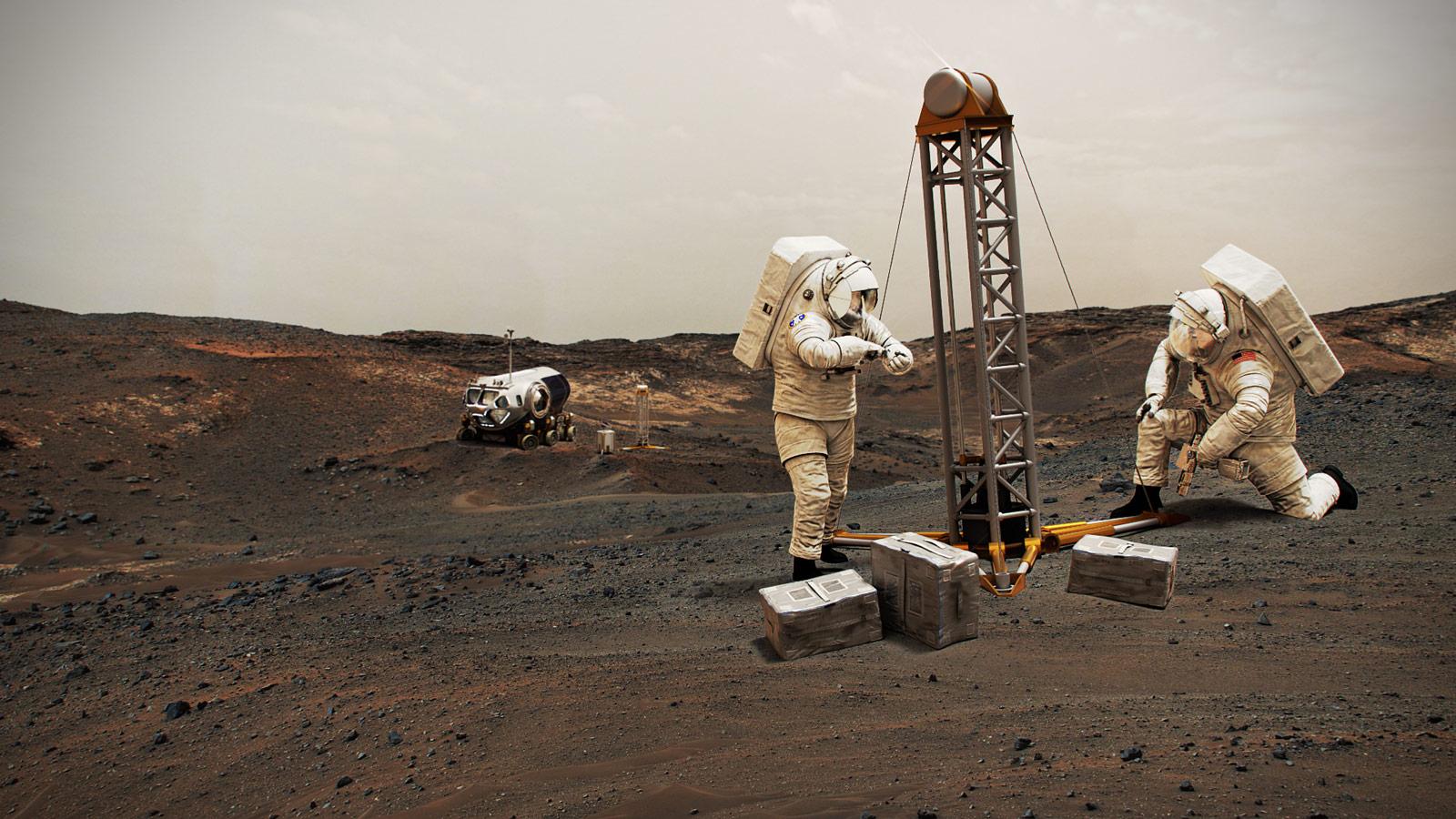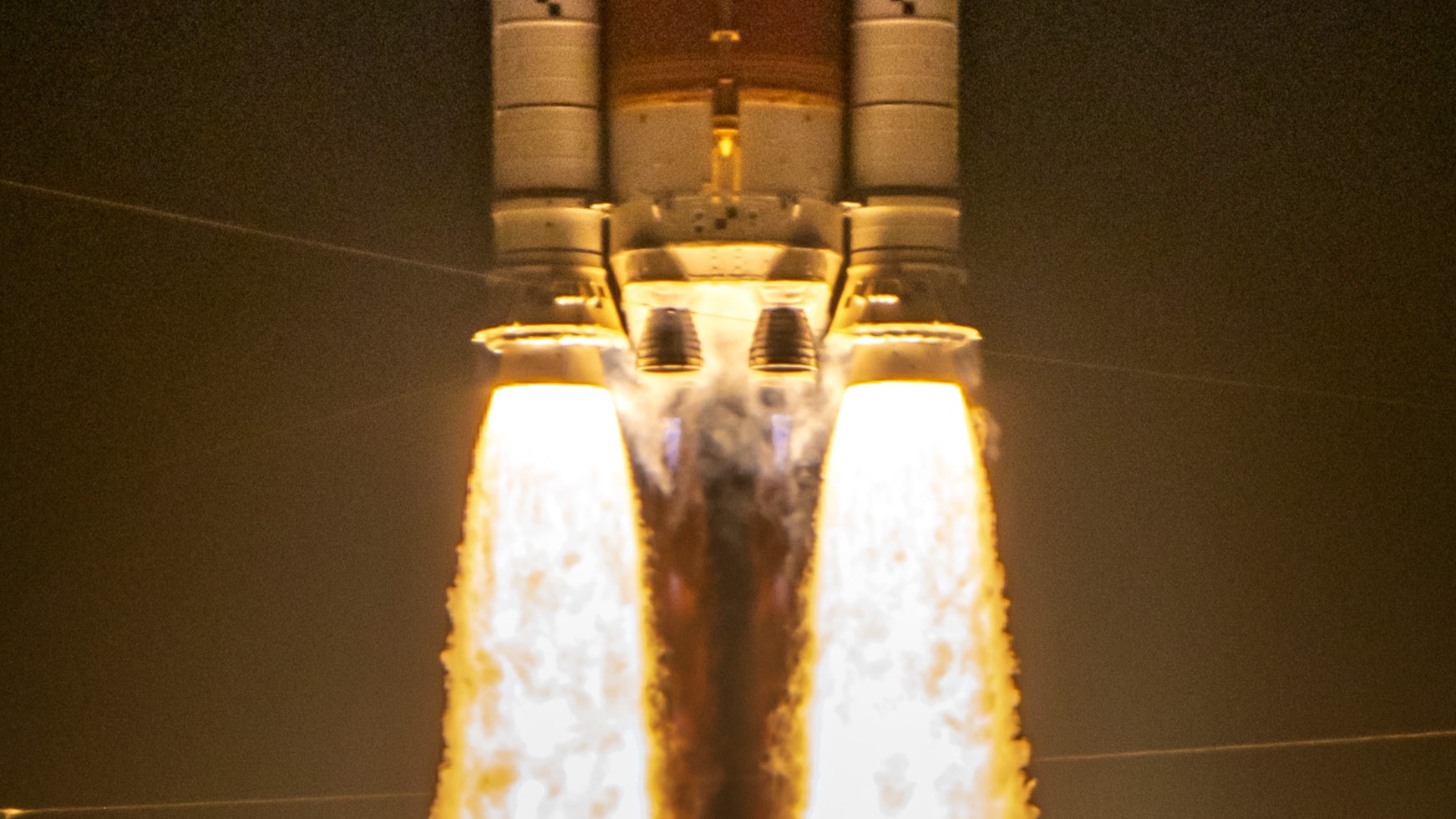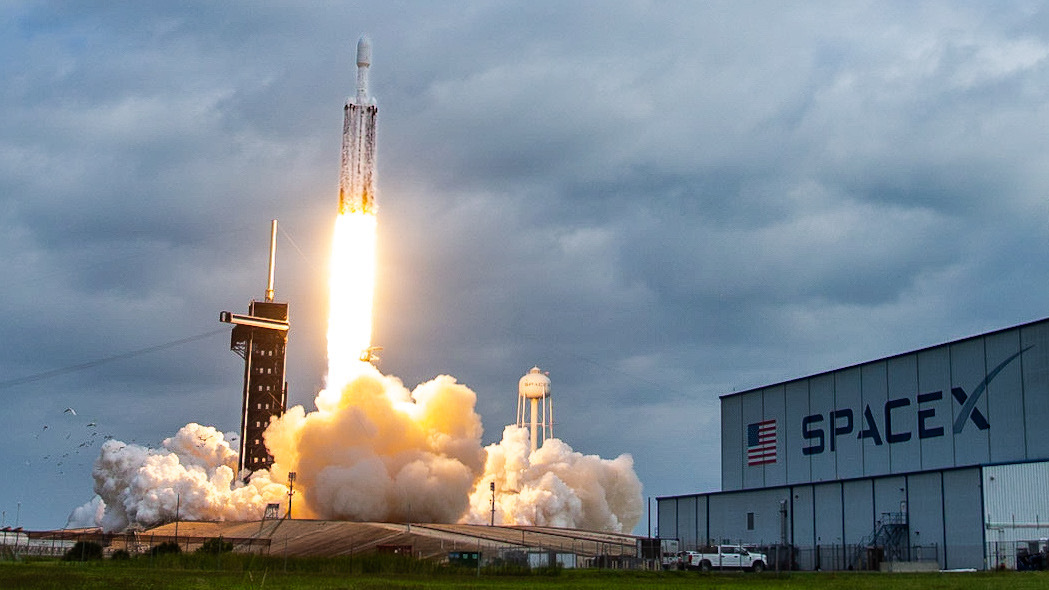Since Donald Trump’s recent electoral victory, rumors and speculation have circulated that NASA’s giant moon rocket, the Space Launch System (SLS), could be under threat. The rocket is one of several key elements needed for the US space agency’s Artemis programme, which aims to return humans to the moon for the first time since 1972.
For the first lunar landing mission, called Artemis III, the SLS will launch four astronauts on NASA’s Orion crew capsule. Orion will then travel to the moon. Once in lunar orbit, Orion will dock with Elon Musk’s Starship vehicle (which has been launched separately). Two astronauts will float into Starship, which undocks from Orion and travels down to the lunar surface.
After walking on the moon, the two astronauts return to lunar orbit in Starship, which docks with Orion. The two moonwalkers rejoin their crewmates and go home on Orion, leaving Starship in orbit around the moon.
The US space journalist Eric Berger recently posted on X: “To be clear we are far from anything being settled, but based on what I’m hearing it seems at least 50-50 that NASA’s Space Launch System rocket will be cancelled.”
Related: NASA begins stacking SLS rocket for Artemis 2 moon mission (photos)
No official announcements have been made. However, such a move could be in line with previous speculation that the Trump administration could gut NASA, forcing it to contract out much of its work to the private companies.
But could another rocket easily take the place of the SLS? This question goes to the heart of what America wants to achieve amid an emerging 21st-century space race. China has pledged to send its astronauts to the lunar surface by 2030. Unlike the US, China is usually conservative in its estimates, so we can assume deadline slippage is unlikely. Meanwhile, several elements of Artemis are holding up the schedule.
One of these delayed elements is Musk’s Starship, which acts as the lander on Artemis III. It still needs to demonstrate key milestones including refuelling in space and performing a landing on the moon without crew. Some in the space community believe that if China were to get to the moon first this century, it would deal a significant blow to US ambitions in space.
Musk has been brought into the incoming administration as one of two chief cost cutters, aiming to make reductions of up to US$2 trillion (£1.57 trillion) from the federal budget. Some observers have been alarmed by Elon Musk’s closeness to Trump and by comments by the president-elect about shifting focus towards a crewed Mars mission.
These comments seem to mirror the views of Musk, who has focused much of his energy on ambitions to settle the red planet, not the moon. The billionaire has said he wants to send humans on a trip to Mars using his Starship vehicle by 2028 – a timeline that some view as unrealistic.
It was actually the first Trump administration that established the Artemis program in 2017. After initial missions to the lunar surface, the program aims to establish a permanent base where astronauts can learn how to live and work on the moon, carrying out cutting-edge research.
However, the schedule has been slipping. US astronauts were to have landed on the moon this year. NASA now says the first landing, during the Artemis III mission, will not take place until Autumn 2026.
Delays have been introduced by redesigns to spacesuits, problems with Orion’s heat-shield and life support systems and, as mentioned, with Starship. An upgraded mobile launch tower for the SLS has also been plagued by cost overruns and schedule slippage.
Notably, an element that isn’t contributing to delays is the SLS, which performed very well during the Artemis I mission in 2022. Many billions of dollars have already been invested in designing and building the SLS and associated infrastructure at NASA’s Kennedy Space Center in Florida.
NASA says the SLS is “the only rocket that can send Orion, astronauts, and cargo directly to the moon in a single launch”. But its expense has been criticised: each SLS launch is estimated to cost more than US$2 billion (£1.6 billion).
News of delays and technical issues with Artemis have coincided with hugely positive PR for Musk’s SpaceX – especially around its test flights of Starship. This included last month’s feat, where the vehicle’s massive booster stage was caught in a pair of robotic arms as it fell back from space to the company’s launchpad in Texas – wowing space enthusiasts around the world. Unlike many launch vehicles, Starship is designed to be fully reusable. Its cost efficiency could greatly benefit future crewed missions.
Mechazilla has caught the Super Heavy booster! pic.twitter.com/6R5YatSVJXOctober 13, 2024
If the SLS were to be cancelled, could Musk’s Starship replace it? Under this scenario, the SpaceX vehicle could presumably serve both as the launcher to send astronauts on their way to lunar orbit and as the lander to take them down to the surface. This is technically feasible, but would be far from a straightforward, like-for-like replacement. The SLS is already an operational rocket, whereas Starship is still in its testing phase and has key steps still to achieve before astronauts can board it.
Another SpaceX rocket that has previously been touted as a contender to launch Orion is the Falcon Heavy. However, engineers would need to modify both the rocket and procedures for assembly and launch. This would carry many uncertainties, and with it the risk of further, significant delays to the Artemis schedule. This all suggests that there is not a lot of time to make major changes to NASA’s moon program if the US is to get ahead in this 21st-century space race.
Rocket launches require specific designs to meet mission requirements, as well as extensive planning for carrying astronauts, spacecraft and payloads. The aims of Artemis are not just to land astronauts on the moon, but to be able to land in a variety of regions on the lunar surface, including the relatively unexplored south pole.
The planning and development required is hugely complex and ambitious. It remains to be seen whether SpaceX, or any other commercial launch companies, are ready for such a major undertaking and commitment.
With tens of billions of dollars already invested in the SLS, it does not seem economically beneficial to completely scrap the rocket. As indicated by NASA’s willingness to seek an innovative approach and work with commercial companies on future Artemis missions, there could be other ways for commercial space players to get involved.
It’s understandable for the incoming Trump administration to raise questions and query cost models in NASA programs. But it would be advisable for them to carefully consider the trade offs before making decisions with such wide-ranging consequences.
It might fall down to whether the priority is winning the new space race. Whatever goals that the new administration chooses to prioritize or target, it may have to carefully justify that decision to other legislators and to the American public.









